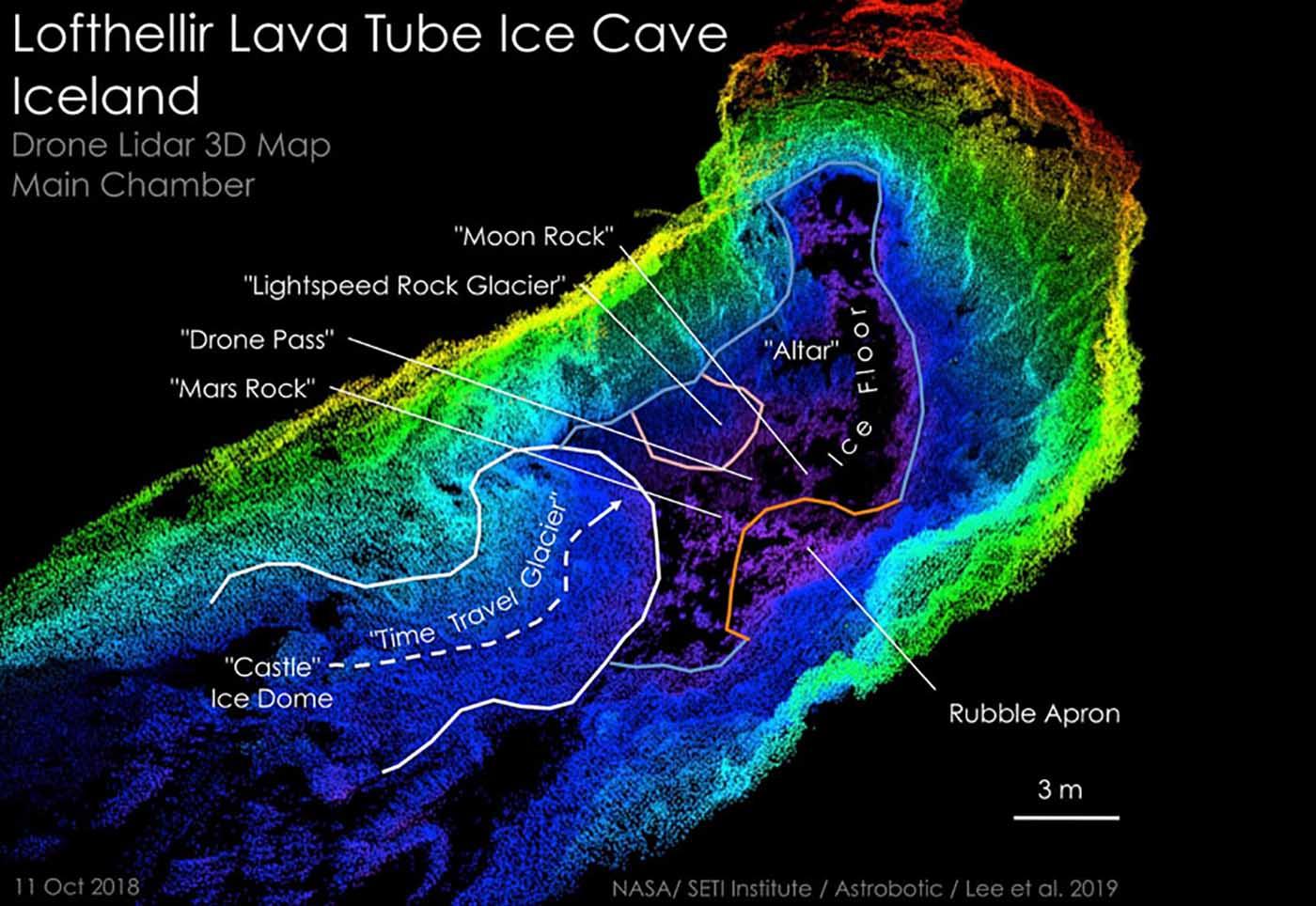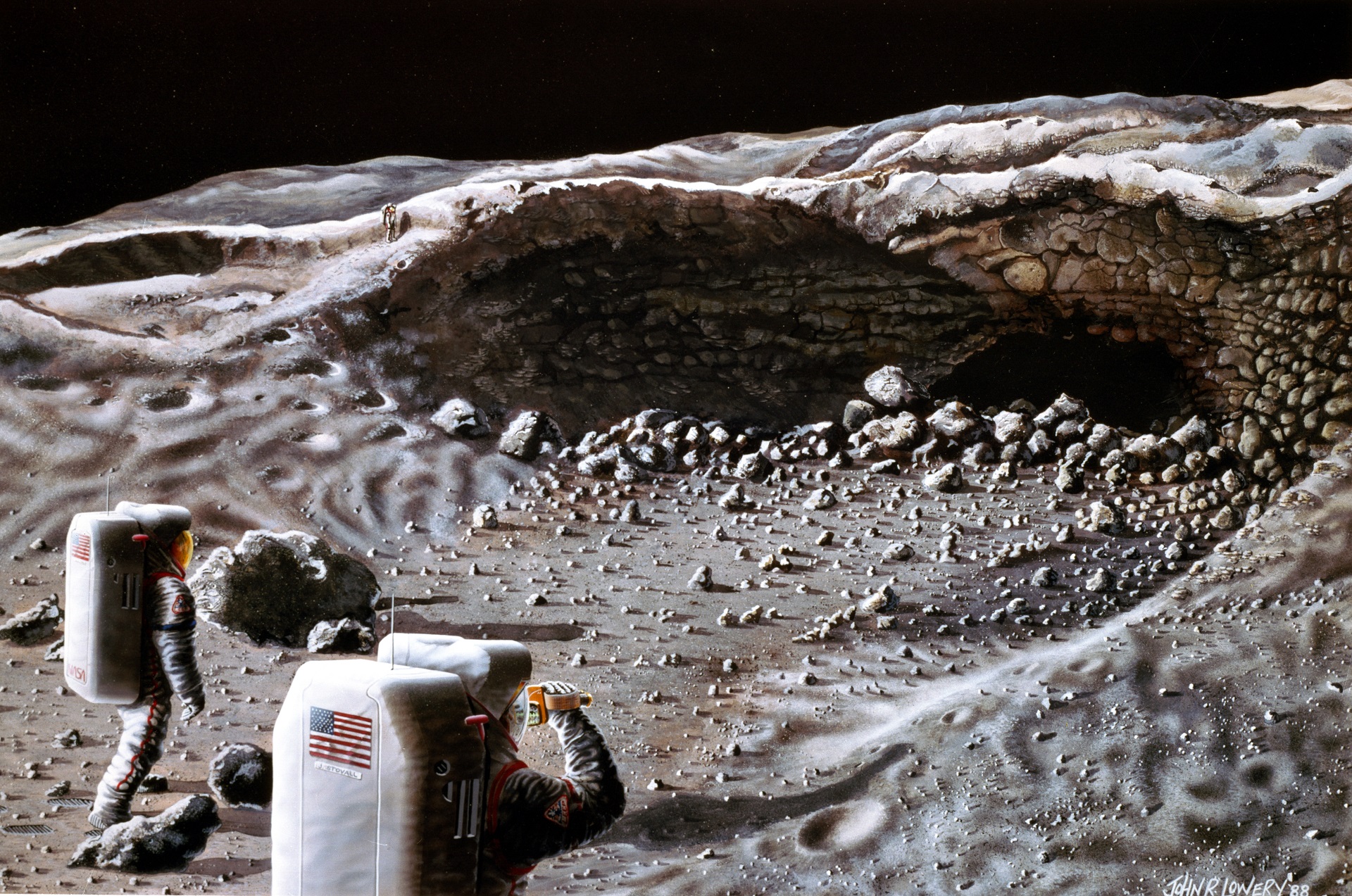Moon Cave Explorations: Nasa Moon Caves
Nasa moon caves – Moon caves are intriguing geological features that have captured the attention of scientists and astronauts alike. NASA has conducted several missions to explore these caves, which have yielded valuable insights into the moon’s history and composition. In this article, we will provide a detailed description of NASA’s past and present moon cave exploration missions, explain their significance, and discuss the challenges and risks associated with exploring these enigmatic environments.
NASA’s Past Moon Cave Exploration Missions, Nasa moon caves
NASA’s first mission to explore moon caves was the Apollo 15 mission in 1971. During this mission, astronauts David Scott and James Irwin descended into a small cave called Hadley Rille. They collected samples of lunar soil and rock, and took photographs of the cave’s interior. The Apollo 16 mission in 1972 also included a moon cave exploration, with astronauts John Young and Charles Duke exploring a cave called Descartes. These early missions provided valuable information about the moon’s surface and composition, but they were limited in scope due to the astronauts’ limited time on the moon.
Present and Future Moon Cave Exploration Missions
In recent years, NASA has renewed its interest in exploring moon caves. The Lunar Reconnaissance Orbiter (LRO), launched in 2009, has identified several potential moon cave locations. In 2019, NASA announced plans to send a robotic rover to explore a moon cave in the coming years. This mission, called the Moon Diver, is expected to provide detailed information about the cave’s interior, including its composition, temperature, and radiation levels. NASA is also considering sending astronauts to explore moon caves in the future, as part of its Artemis program.
The moon’s surface is dotted with mysterious caves, some of which may have been formed by ancient lava flows. These caves could provide shelter for future astronauts and could also contain valuable scientific data. One of the most famous moon caves is the Mare Tranquillitatis, which was visited by the Apollo 11 astronauts in 1969.
The astronauts discovered that the cave was filled with a fine dust that was similar to the dust found on the surface of the moon. They also found that the cave was very cold, with temperatures reaching as low as -238 degrees Fahrenheit.
Despite the harsh conditions, the astronauts were able to collect several samples of the dust and bring them back to Earth for analysis. These samples have helped scientists to learn more about the moon’s history and composition. Recently, there has been renewed interest in the moon’s caves, and several missions are planned to explore them in the coming years.
One of these missions is the Artemis program, which is a joint effort between NASA and the European Space Agency. The Artemis program aims to send astronauts back to the moon by 2024, and one of the goals of the mission is to explore the moon’s caves.
If the Artemis program is successful, it could provide us with new insights into the moon’s history and could help us to learn more about the potential for life beyond Earth. In the meantime, we can satisfy our cravings for exploration with a delicious treat from krispy kreme paris doughnuts , while we wait for the next moon mission.
Significance of Moon Cave Explorations
Moon cave explorations are significant for several reasons. First, they provide a unique opportunity to study the moon’s interior. Moon caves are formed by volcanic activity, and they can contain samples of lunar rock and soil that have been protected from the harsh radiation and temperature conditions on the moon’s surface. These samples can provide valuable information about the moon’s composition and history.
Second, moon cave explorations can help us to understand the potential for life on the moon. Moon caves provide a protected environment from the harsh conditions on the moon’s surface, and they may contain water ice or other resources that could support life. Exploring moon caves could help us to determine whether or not life has ever existed on the moon, and it could also provide insights into the potential for future human habitation on the moon.
Challenges and Risks of Moon Cave Explorations
Exploring moon caves is a challenging and risky endeavor. Moon caves are often dark, cold, and dusty, and they can contain sharp rocks and other hazards. Astronauts who explore moon caves must be equipped with special suits and equipment to protect them from these hazards. There is also the risk of cave-ins and other accidents, and astronauts must be trained to deal with these emergencies.
As the war in Ukraine rages on, it’s easy to forget the otherworldly wonders that await us beyond our planet. The recent discovery of potential moon caves by NASA is a reminder that even amidst the horrors of conflict, the pursuit of knowledge and exploration continues.
These caves, if confirmed, could provide valuable insights into the history and evolution of our celestial neighbor, and perhaps even harbor signs of extraterrestrial life. As we navigate the complexities of the Russia-Ukraine war , let us not lose sight of the boundless possibilities that lie both above and below our heads.
Despite the challenges and risks, moon cave explorations are an important part of our understanding of the moon. By exploring moon caves, we can learn more about the moon’s composition, history, and potential for life. This information will help us to make informed decisions about future human missions to the moon.
Potential Discoveries in Moon Caves

Moon caves are intriguing environments that could potentially hold a wealth of scientific discoveries. The unique conditions found within these caves, such as their protection from radiation and extreme temperatures, make them ideal places to search for evidence of past or present life, as well as other valuable scientific data.
Evidence of Past or Present Life
One of the most exciting potential discoveries in moon caves is evidence of past or present life. The moon is thought to have been formed from the debris of a giant impact between the Earth and a Mars-sized object early in the solar system’s history. This impact would have vaporized much of the moon’s surface, making it unlikely that any life could have survived. However, some scientists believe that life may have been able to survive in the moon’s interior, protected from the harsh conditions on the surface.
Moon caves could provide an ideal environment for life to survive. They are shielded from radiation and extreme temperatures, and they may contain water ice and other resources that could support life. Scientists are planning to explore moon caves in the coming years, and they are hopeful that they will be able to find evidence of past or present life.
Other Scientific Discoveries
In addition to evidence of life, moon caves could also contain other valuable scientific data. For example, they could contain samples of the moon’s early crust, which could help scientists to understand how the moon formed and evolved. They could also contain samples of the solar wind, which could help scientists to understand the history of the sun.
Moon caves are a valuable scientific resource, and they could potentially lead to a number of important discoveries. Scientists are eager to explore these caves and learn more about the moon’s history and potential for life.
Future Plans for Moon Cave Exploration

NASA has ambitious plans for future moon cave exploration, with the goal of sending astronauts to live and work in these caves for extended periods.
These missions will help us to learn more about the Moon’s geology and history, search for evidence of life, and develop new technologies for future space exploration.
Goals and Objectives
The goals of future moon cave exploration missions include:
- To map and explore the Moon’s caves
- To study the geology and history of the Moon
- To search for evidence of life on the Moon
- To develop new technologies for future space exploration
Technologies and Advancements
NASA is developing a number of new technologies to support future moon cave exploration missions, including:
- Lightweight and durable spacesuits that will allow astronauts to explore caves without the need for bulky backpacks
- Robotic systems that can map and explore caves autonomously
- New drilling technologies that will allow astronauts to collect samples from deep within caves